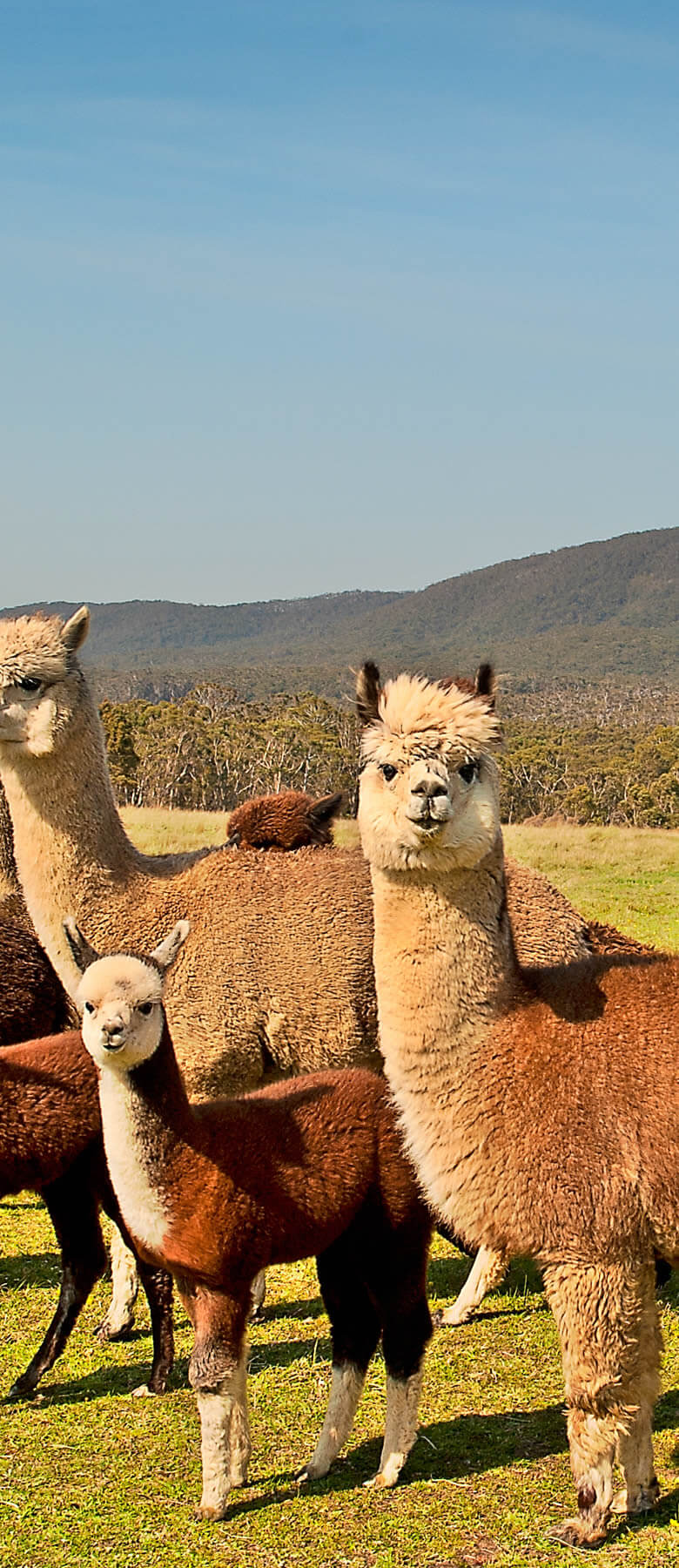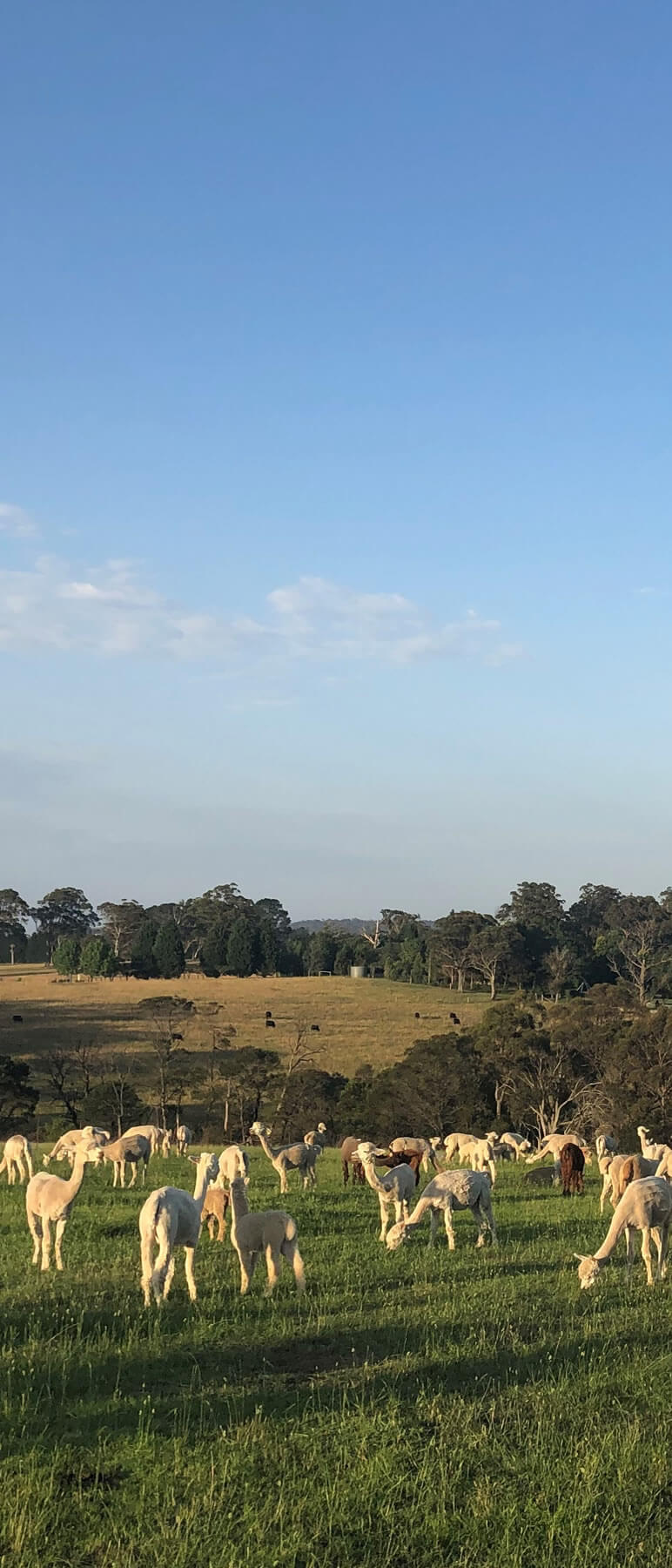Australian alpacas are highly valued in international markets for their quality genetics, premium fleece and healthy constitutions.
Australian alpacas are sold into several export markets:
- Stud stock with highly valued genetics into the European Union (EU), United Kingdom (UK) and New Zealand (NZ) markets;
- Shipments of livestock to establish alpaca herds in Asia
Australian Alpaca Industry Export Strategy
The aim of this strategy is to identify, quantify and prioritise market opportunities for the alpaca live animal and fleece production sectors in international markets to 2030. The Australian alpaca industry produces both fleece and breeding livestock for the export market. Expansion of both components of this trade is essential for industry sustainability and future growth. Income from export livestock sales and fibre production is essential to raise the capital necessary for reinvestment in business growth.
Realising the full potential of the export market in Australian alpaca livestock and fleece production will make a significant contribution to the Ag2030 $100 billion target. Failure to develop sufficient national herd capacity to meet international demand for fleece and breeding livestock risks markets being lost to international competitors.
Current Status:
Australian alpaca is highly competitive in international markets, due to its exceptional quality and verifiable provenance. Whilst alpaca is a relatively new export industry, Australian alpaca producers have leveraged off the 100+ years of premium fibre production expertise in the sheep industry to establish world-leading alpaca genetics and fibre quality.
The current livestock export trade features three categories of trade:
- Premium breeding livestock with highly valued genetics
- Tier two breeding livestock sold in bulk consignment
- Tier two livestock sold in small consignments
Australian alpaca fleece producers have established solid trade relationships with fibre manufacturers throughout Asia and Europe. Australian alpaca producers need access to growth capital to be able to meet the increasing international market demand for bulk consignments of quality fibre.
| Strategy | Outcome |
|---|---|
| Develop Profile of the Australian Alpaca Industry | · Improve Statistical Data on fibre clip & livestock – quality, quantity & production capacity · Use data to improve government understanding of the Australian alpaca industry and growth potential. |
| Conduct market research on: – the existing and emerging markets in the alpaca livestock export trade, and – scope international trends in fibre production and manufacturing | · Leverage off existing export trade pathways · Identification of new markets and trade potential · Identification of trade barriers & competitors · Data ready for funding applications. |
| Develop and implement an Alpaca Industry Biosecurity Program to meet current requirements and prepare breeders for future regulatory and technological changes | · Improve capacity of AAA membership to be export ready and capitalize on existing and emerging trade opportunities · Leverage reputation for having biosecurity world best practice to increase export trade · Streamline the negotiation of Export Health Protocols in emerging markets |
| Strategy Outcome Develop Profile of the Australian Alpaca Industry · Improve Statistical Data on fibre clip & livestock – quality, quantity & production capacity · Use data to improve government understanding of the Australian alpaca industry and growth potential. Conduct market research on: – the existing and emerging markets in the alpaca livestock export trade, and – scope international trends in fibre production and manufacturing · Leverage off existing export trade pathways · Identification of new markets and trade potential · Identification of trade barriers & competitors · Data ready for funding applications. Develop and implement an Alpaca Industry Biosecurity Program to meet current requirements and prepare breeders for future regulatory and technological changes · Improve capacity of AAA membership to be export ready and capitalize on existing and emerging trade opportunities · Leverage reputation for having biosecurity world best practice to increase export trade · Streamline the negotiation of Export Health Protocols in emerging markets Explore, develop and implement export revenue streams to support long-term sustainability and growth of the AAA to better represent Australian alpaca breeders | · Revenue raised from exportation of fibre and live animal exports reinvested into market and product development. |
| Conduct research and development to identify and maximise genetic trade opportunities | · Understanding and overcoming barriers to camelid embryo freezing · Reducing biosecurity risk on export trade |


